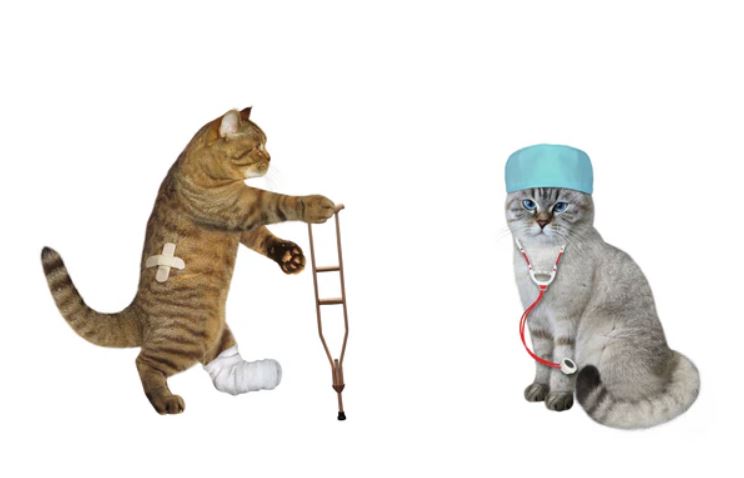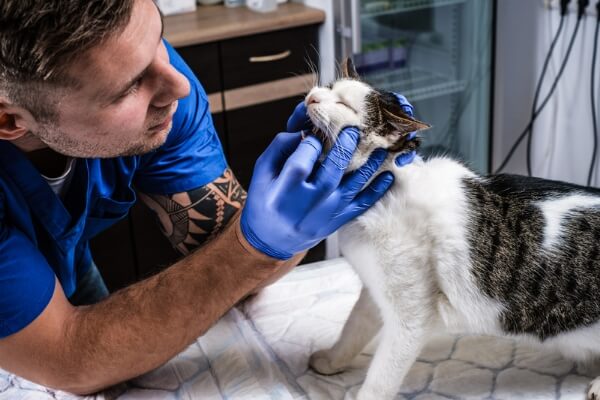Cat First Aid Kit Items Checklist

If you’re here, chances are you’re a proactive cat owner who knows that emergencies can happen when you least expect them. Maybe your cat’s curiosity has gotten the best of them one too many times, or perhaps you’ve found yourself in a situation where you wished you were better prepared.
Having the right items on hand can make all the difference in stabilizing your cat before you get to the vet. I’ve put together a checklist to help you assemble your very own pet first aid kit, drawing from both veterinarians advice and personal experience.
The purpose of this first aid kit is to treat your cat’s injuries, stabilize them, and then get them to the vet as quickly as possible. I’ve tried to make this first aid kit as thorough as possible, balancing cost, space, and practicality. After all, what are the chances that your cat will rupture a main artery during a casual stroll in the park, right?
Read Also: How To Get Poop Out Of Cat Fur (Whether Fresh, Dry, Or Runny)
Jump to Section
So, What Items Should Be In A Cat First Aid Kit?

Now that we’ve established the importance of a first aid kit for your cat, the key is to have a balanced mix of items that cover a range of potential emergencies. Here’s a checklist to help you put together a kit that will keep your feline safe and sound:
- Basic Medical Supplies
- Medications and Treatments
- Tools and Equipment
- Emergency Contact Information
- Comfort and Care Items
- Personal Information and Records
- Food and Water Essentials
1. Basic Medical Supplies
When it comes to handling minor injuries or unexpected scrapes, having basic medical supplies in your cat’s first aid kit is essential.
- Sterile Gauze Pads and Bandages: For wrapping wounds or providing padding. Cats can get into all sorts of mischief, and having gauze on hand is a must for stopping bleeding or protecting injuries.
- Adhesive Tape: Choose a hypoallergenic type that sticks well but is gentle on your cat’s fur. This can be used to secure gauze or bandages.
- Antiseptic Wipes or Solution: Opt for pet-safe antiseptics to clean minor cuts, scratches, or abrasions. Avoid anything with alcohol, as it can sting and irritate your cat’s skin.
- Tweezers and Scissors: Tweezers are essential for removing splinters or ticks, while scissors with rounded tips are safer for cutting bandages or matted fur.
- Cotton Balls and Swabs: Useful for applying ointments, cleaning wounds, or gently cleaning around your cat’s eyes and ears.
2. Medications and Treatments
For a well-rounded cat first aid kit, include essential medications and treatments designed specifically for cats. Items like:
- Pet-Specific Antibiotic Ointment: Helps prevent infections in minor cuts and scrapes. Make sure it’s safe for cats, as human ointments can contain ingredients harmful to them.
- Hydrocortisone Cream: Useful for treating mild skin irritations and itching. Only use as directed by your vet.
- Styptic Powder or Pencil: Stops bleeding quickly from minor cuts, especially useful if you accidentally trim a claw too short.
- Activated Charcoal: In case your cat ingests something toxic, this can help absorb the substance before you get to the vet. However, consult your vet before administering it.
- Saline Solution: For flushing out debris from your cat’s eyes or cleaning wounds. It’s gentle and non-irritating.
3. Tools and Equipment
Having the right tools and equipment in your cat’s first aid kit can make a significant difference in an emergency.
- Digital Thermometer: A pet-specific digital thermometer is a must to check your cat’s temperature in case of illness. Remember to have some water-based lubricant on hand for easier use.
- Muzzle and Soft Towel: Even the calmest cat can become aggressive when in pain or scared. A soft muzzle can prevent bites, and a towel can help wrap and immobilize them safely.
- Syringe or Dropper: Ideal for administering liquid medications, oral rehydration solutions, or even food if your cat is refusing to eat.
- Latex or Nitrile Gloves: Protects you from contact with blood or other bodily fluids when handling injuries.
4. Emergency Contact Information
Common household items like cleaning products, plants, or medications can be harmful. If you suspect poisoning, contact your vet immediately. Do not attempt home remedies without professional guidance. Always be prepared with:
- Vet Contact Information: Include your regular vet’s contact details, emergency vet numbers, and a list of nearby animal hospitals. It’s best to have these printed and laminated to prevent damage.
- Poison Control Hotline: Make sure to have the number for a pet poison control center handy in case your cat ingests something toxic.
5. Comfort and Care Items
In an emergency, keeping your cat calm and comfortable is just as important as treating their injuries. You can use:
- Blanket or Towel: For warmth and comfort or to use as a stretcher in an emergency. Cats are easily stressed, and a familiar, comforting item can help calm them.
- Pet Carrier: A portable, sturdy carrier is essential for safely transporting your cat in case of an emergency.
- Calming Spray or Pheromone Diffuser: These can help soothe a stressed or anxious cat during an emergency.
6. Personal Information and Records

Medical Records: Keep a copy of your cat’s medical records, including vaccination history, known allergies, and any medications they are on. This is particularly helpful if you have to visit an unfamiliar vet.
7. Food and Water Essentials
- Bottled Water and Collapsible Bowl: Hydration is critical in emergencies, especially if your cat is dehydrated or overheated.
- High-Calorie Nutritional Paste or Treats: If your cat isn’t eating due to stress or illness, high-calorie paste or their favorite treats might encourage them to eat.
Cat First Aid Steps

Let’s start with the basics – here are the four essential steps in administering feline first aid:
- SECURE: Calmly ensure your cat is safe and secure. Watch out for potential dangers like traffic or other animals. Approach your cat cautiously and move them to a secure location. Keep in mind that a distressed cat might bite or scratch, so using a thick blanket or gloves when handling them can be helpful.
- ASSESS: Check for any obvious injuries or signs of illness, such as protruding bones, limping, bleeding, irregular behavior, or difficulty breathing. We’ll cover common symptoms and their causes in the next section.
- CALL: As soon as possible, call your vet for advice on the best course of action. It’s also a good idea to give the clinic a heads-up that you’re on your way with a medical emergency.
- TREAT: Provide emergency first aid only if you’re confident in your assessment and if your vet has approved the treatment. If you can’t contact a vet immediately, use your best judgment. Always wear disposable gloves when dealing with open wounds.
Read Also: My Cat Ate A Little Before Surgery: What Should I Do?
Final Thoughts
With this checklist, you can rest easy knowing you’re prepared for whatever your curious feline might get themselves into. Store your cat first aid kit in an easily accessible spot, check it regularly to replace any expired items, and familiarize yourself with its contents so you can act quickly when every second counts. Your cat is part of your family, and being prepared is just one more way to show how much you care.
Read related posts about




